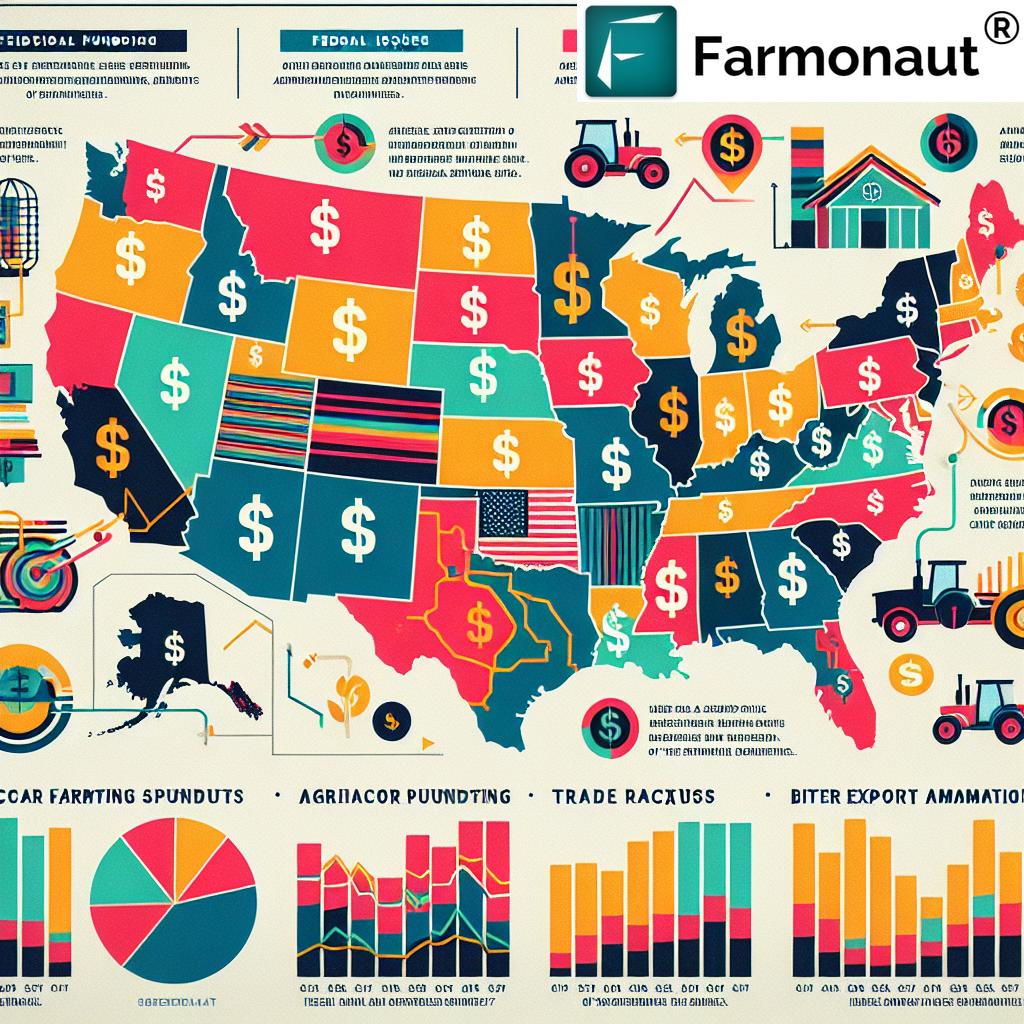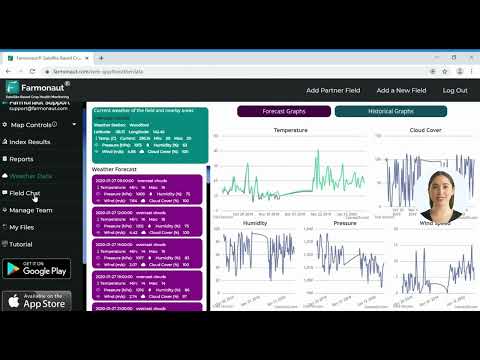How Federal Spending Cuts and Tariffs Impact Rural America: Agricultural Funding Concerns Grow
“Over 50% of US states have rural areas heavily dependent on federal funding for agricultural research and infrastructure projects.”
In recent years, we’ve witnessed a growing tension between the Trump administration’s disruptive agenda and the interests of rural America. As agricultural funding concerns grow, Republican lawmakers are finding themselves in a delicate balancing act, trying to support the president’s policies while protecting their constituents’ needs. In this comprehensive analysis, we’ll explore how federal spending cuts and tariffs are impacting rural communities, with a particular focus on agricultural funding, infrastructure projects, and trade policies.
The Delicate Balance: Trump’s Agenda vs. Rural State Interests
Republican lawmakers on Capitol Hill have generally been supportive of President Donald Trump’s executive actions and attempts to reduce federal spending. They’ve often touted these efforts as the kind of disruption that American voters called for in the 2020 election. However, as the potential consequences of these policies begin to materialize, many representatives are starting to push back, especially when it comes to issues that directly affect their constituents.
This dynamic highlights a critical challenge for the Trump administration. While GOP lawmakers represent Trump’s most important line of defense for controversial orders, there’s a risk that if he pushes too far, they may use their legislative powers to stop him, potentially even teaming up with Democrats if necessary.

Agricultural Funding Cuts: A Major Concern for Rural States
One of the most significant areas of concern for rural states is the potential reduction in agricultural funding. Many Republican senators and representatives are pushing back against proposed cuts to programs that are vital for their constituents. For example:
- Sen. Katie Britt (R-Ala.) has expressed concerns about funding reductions under the National Institutes of Health (NIH), which significantly benefits institutions like the University of Alabama.
- Sen. Susan Collins (R-Maine) criticized the cap on indirect costs under NIH grants as “poorly conceived” and potentially harmful to vital research at Maine institutions.
- Sen. Bill Cassidy (R-La.) warned that universities without large endowments would be disproportionately affected by NIH cuts, potentially disadvantaging research institutions in states like Louisiana.
These concerns highlight the importance of federal funding for agricultural research and development in rural states. Many of these areas rely heavily on government support to maintain their competitive edge in the agricultural sector and drive innovation in farming practices.
The Impact of Tariffs on Rural America
“Tariffs on agricultural imports affect trade dynamics in more than 30 countries, impacting US farmers and rural economies.”
Another significant issue facing rural America is the impact of tariffs on agricultural imports and exports. President Trump’s aggressive stance on trade has led to concerns among many Republican lawmakers, particularly those representing states with significant agricultural industries. Some key points of contention include:
- Sen. Chuck Grassley (R-Iowa) has protested against potential tariffs on imports from Canada, citing concerns about the high cost of fertilizer for Iowa farmers.
- Kentucky’s Republican senators, Mitch McConnell and Rand Paul, have objected to Trump’s tariffs, warning about increased costs for American consumers and potential negative impacts on Kentucky’s bourbon and auto industries.
- The threat of retaliatory tariffs from trade partners has raised concerns about a broader trade war that could hit various American industries, from agriculture to manufacturing.
These tariffs and trade tensions have the potential to significantly impact rural economies, affecting everything from crop prices to manufacturing jobs in agricultural communities.
Federal Farm Support Programs: A Lifeline for Rural Communities
Federal farm support programs play a crucial role in sustaining rural economies across the United States. These programs provide financial assistance, risk management tools, and market access support for farmers and ranchers. However, recent policy changes and budget proposals have raised concerns about the future of these vital programs.
One example of the importance of these programs is the “Food for Peace” initiative, which has been targeted for potential dismantling. A coalition of Republicans from rural states and districts, including House Agriculture Committee Chair Glenn Thompson (R-Pa.), has introduced legislation to save this program by transferring it to the Department of Agriculture.
Rep. Tracey Mann (R-Kan.) emphasized the program’s importance, stating, “For 70 years, Kansas and American farmers have played an active role in sending their commodities to feed malnourished and starving populations around the world. This free gift from the American people is more than food. It’s diplomacy and feeds the most vulnerable communities.”
The potential loss or reduction of such programs could have far-reaching consequences for rural communities that rely on agriculture as a primary economic driver.
Infrastructure Projects and Clean Energy Initiatives in Rural Areas
Infrastructure development and clean energy initiatives are two areas where federal spending has a significant impact on rural America. Many rural communities depend on federal funding for crucial infrastructure projects, including road improvements, bridge repairs, and broadband internet expansion.
However, recent policy changes have raised concerns about the future of these investments. President Trump has frozen grant funding under two laws enacted by President Biden, which provided money for infrastructure and clean energy credits. This freeze affects projects across the country, including in many red states that have benefited significantly from these programs.
Clean energy initiatives, in particular, have become an important source of economic development for many rural areas. Wind farms, solar installations, and biofuel production facilities have created jobs and provided new income streams for farmers and rural communities. Any reduction in federal support for these initiatives could have a substantial impact on rural economies.

The Role of Technology in Mitigating Challenges
As rural America faces these challenges, technology is playing an increasingly important role in helping farmers and agricultural businesses adapt and thrive. Advanced farming technologies, such as those offered by companies like Farmonaut, are helping farmers optimize their operations and increase productivity, even in the face of economic pressures.
Farmonaut’s satellite-based farm management solutions provide valuable tools for precision agriculture, including:
- Real-time crop health monitoring
- AI-based advisory systems
- Blockchain-based traceability
- Resource management tools
These technologies can help farmers make more informed decisions about crop management, resource allocation, and market strategies, potentially offsetting some of the negative impacts of federal policy changes.
The Economic Dependency of Red States on Federal Funding
An interesting aspect of the current situation is the disproportionate dependency of many red states on federal funding. According to an analysis by the Rockefeller Institute of Government for the fiscal 2024 budget, among the top 20 states that receive more money from the federal government than they contribute in tax payments, 13 are solidly red states that voted for Trump in the last three elections.
This dependency creates a complex dynamic for Republican lawmakers who must balance their support for reduced federal spending with the needs of their constituents who rely heavily on these funds. It also highlights the potential for significant economic disruption in these states if federal spending cuts are implemented without careful consideration of their impacts.
Impact on Agricultural Industries and Consumers
The effects of federal spending cuts and tariffs extend beyond just farmers and rural communities. They have the potential to impact entire agricultural industries and, ultimately, consumers across the country. Some potential consequences include:
- Higher food prices due to increased production costs and disrupted supply chains
- Reduced availability of certain agricultural products
- Job losses in agriculture-related industries
- Decreased global competitiveness of U.S. agricultural exports
These impacts could be particularly severe for low-income consumers and food-insecure households, who are most vulnerable to increases in food prices.
The Role of Congress in Shaping Agricultural Policy
As these issues continue to unfold, Congress will play a crucial role in shaping agricultural policy and mitigating the potential negative impacts of spending cuts and tariffs. Some key areas where congressional action may be necessary include:
- Protecting critical agricultural research funding
- Ensuring the continuation of vital farm support programs
- Addressing the impacts of tariffs on agricultural trade
- Supporting infrastructure development in rural areas
- Promoting clean energy initiatives that benefit rural communities
The challenge for lawmakers will be finding a balance between fiscal responsibility and supporting the needs of rural America.
Looking to the Future: Sustainable Solutions for Rural America
As we navigate these complex issues, it’s clear that sustainable, long-term solutions are needed to support rural America. This may involve a combination of policy changes, technological innovations, and strategic investments in rural communities.
Some potential strategies for supporting rural America in the face of these challenges include:
- Investing in agricultural research and development to improve productivity and sustainability
- Supporting the adoption of advanced farming technologies to increase efficiency and reduce costs
- Developing new markets for agricultural products, both domestically and internationally
- Improving rural infrastructure, including broadband internet access, to support economic diversification
- Promoting clean energy initiatives as a source of economic development in rural areas
By implementing these strategies and others, we can work towards a more resilient and prosperous rural America, even in the face of changing federal policies and global economic pressures.
The Role of Technology in Supporting Rural America
As we consider solutions for the challenges facing rural America, it’s important to highlight the role that technology can play in supporting farmers and agricultural businesses. Advanced farming technologies, like those offered by Farmonaut, can help mitigate some of the impacts of policy changes and economic pressures.
Farmonaut’s satellite-based farm management solutions provide valuable tools for precision agriculture, including real-time crop health monitoring, AI-based advisory systems, and resource management tools. These technologies can help farmers optimize their operations, reduce costs, and increase productivity.
To learn more about how Farmonaut’s technology can support your farming operations, visit their website or download their mobile apps:
For developers interested in integrating Farmonaut’s satellite and weather data into their own systems, check out their API and API Developer Docs.
Impact of Federal Policies on Rural America
| Policy Area | Current Status | Potential Impact of Cuts/Tariffs | States Most Affected |
|---|---|---|---|
| Agricultural Funding | $146 billion (FY 2023) | Reduced support for farmers, potential farm closures | Iowa, Nebraska, Kansas, North Dakota |
| Infrastructure Projects | $1.2 trillion infrastructure bill | Delayed or cancelled rural infrastructure improvements | West Virginia, Mississippi, Montana, Alaska |
| Agricultural Research | $3.5 billion (USDA Research Budget) | Slowed innovation in farming practices and technology | California, Texas, Florida, Illinois |
| Clean Energy Initiatives | $369 billion (Inflation Reduction Act) | Reduced investment in rural clean energy projects | Iowa, Texas, Oklahoma, Kansas |
| Farm Support Programs | $22 billion (FY 2023) | Increased financial risk for farmers, potential market instability | Iowa, Illinois, Minnesota, Nebraska |
Earn With Farmonaut: Join Our Affiliate Program
Earn 20% recurring commission with Farmonaut’s affiliate program by sharing your promo code and helping farmers save 10%. Onboard 10 Elite farmers monthly to earn a minimum of $148,000 annually—start now and grow your income!
To learn more about this exciting opportunity, visit our Affiliate Program page.
Farmonaut Subscriptions
Frequently Asked Questions
- How do federal spending cuts affect rural America?
Federal spending cuts can significantly impact rural America by reducing funding for agricultural research, infrastructure projects, and farm support programs. This can lead to decreased economic opportunities, reduced innovation in farming practices, and increased financial risk for farmers. - What are the potential consequences of tariffs on agricultural imports?
Tariffs on agricultural imports can lead to retaliatory measures from trading partners, potentially reducing export opportunities for U.S. farmers. They can also increase the cost of inputs for farmers and raise food prices for consumers. - How do agricultural research funding cuts impact rural communities?
Cuts to agricultural research funding can slow innovation in farming practices and technologies, potentially reducing crop yields and farm profitability. This can have ripple effects throughout rural economies that depend on agriculture. - What role do federal farm support programs play in rural America?
Federal farm support programs provide financial assistance, risk management tools, and market access support for farmers and ranchers. These programs help stabilize farm incomes and support rural economies. - How can technology help mitigate the challenges facing rural America?
Advanced farming technologies, such as those offered by Farmonaut, can help farmers optimize their operations, reduce costs, and increase productivity. These tools can help offset some of the negative impacts of policy changes and economic pressures.
In conclusion, the impact of federal spending cuts and tariffs on rural America is a complex issue with far-reaching consequences. As policymakers navigate these challenges, it’s crucial to consider the unique needs of rural communities and the vital role that agriculture plays in our national economy. By balancing fiscal responsibility with targeted support for rural America, we can work towards a more resilient and prosperous future for all.







